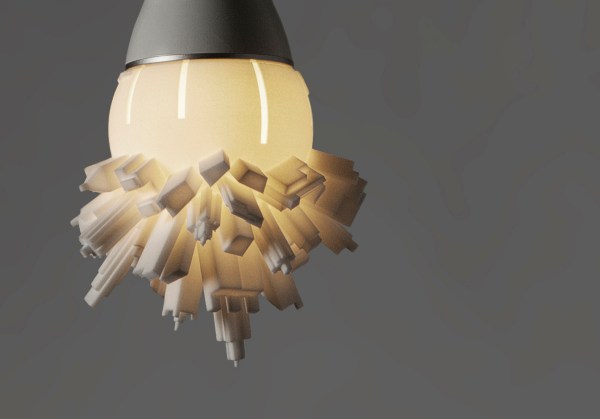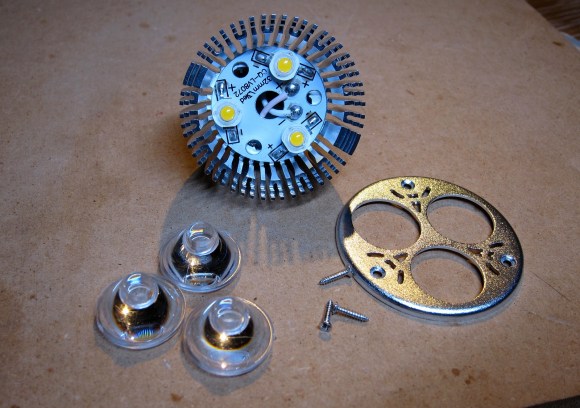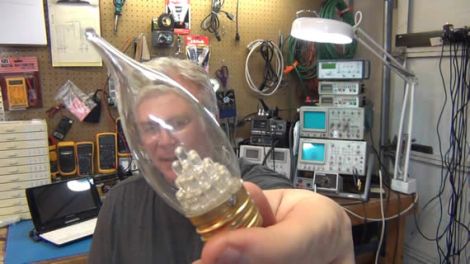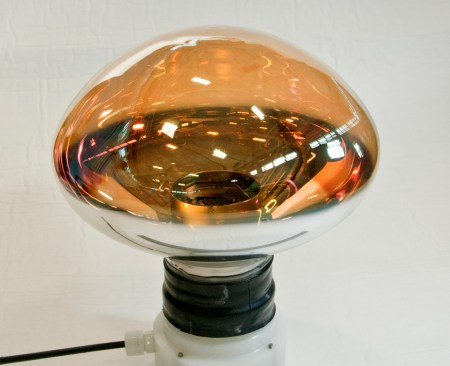Cost-effective LED lighting for your home has opened up many doors for more efficient living, but also some more creative illumination for your living space. If you want to bring the dazzle of city lights right into your home, [David Grass] has two projects to sate this desire in perhaps the most literal way possible: Huddle and Stalaclights.
These clever, 3D printed bulbshades are possible since LEDs emit very little heat, and can be printed in a variety of designs. Huddle is named for — and illustrates — humanity’s coalescing into cities as the centre of modern life from which most of our information and technology emits. Stalaclights offers an inverted perspective on the straining heights of skyscrapers and is inspired by the Art Deco era and the expansion of cities like New York and Chicago.



 Halogen bulbs put out a lot of focused light but they do it at the expense of burning up a lot of Watts and generating a lot of heat. The cost for an LED replacement like the one seen disassembled above has come down quite a bit. This drove [Jonathan Foote] to purchase several units and he just couldn’t resist tearing them apart to try out a couple of hacks.
Halogen bulbs put out a lot of focused light but they do it at the expense of burning up a lot of Watts and generating a lot of heat. The cost for an LED replacement like the one seen disassembled above has come down quite a bit. This drove [Jonathan Foote] to purchase several units and he just couldn’t resist tearing them apart to try out a couple of hacks.













